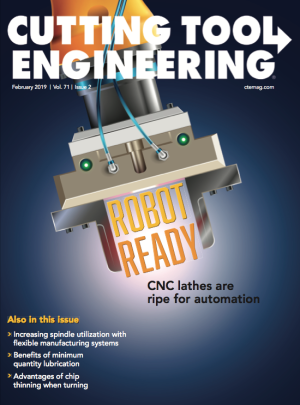A relationship with a new client started simply enough: a referral from a guy in purchasing at an old customer. After the initial interaction, my shop arranged an introductory meeting to review the company’s situation and assess whether we were a good fit. We eventually snagged a couple of small orders, and the company appreciated our quality and timely delivery. This led to a meeting where the client wanted more information about our capabilities. Satisfied but not totally sold, the customer soon sent us a package of drawings that was more than 50 pages, politely requesting, “OK, let’s see what you can do with this mess.” I guess it was a business call-to-action moment.
Thankfully, my sales and estimating team recognized the potential. Upon receiving the package, the magnitude of this opportunity was fully explained to me: The company manufactures a variety of heavy equipment and industrial products that are sold internationally, some operations are being consolidated into a new facility near our shop, and the company likes us. Nice combination so far. All my concerns were alleviated, and we just had to review and quote the package ASAP. Everyone dug in and spent a few days reviewing drawings and crunching numbers.
Several days after submitting the formal quote, the procurement manager verbally informed us we’d be getting the entire purchase order within the week—great news. However, before receiving the official purchase order, we were informed of a final hurdle: Our facility would be required to pass a stringent audit for quality assurance (QA) and health, safety and environment. While this audit wasn’t unexpected, we had gotten ahead of ourselves focusing on that first big purchase order and not any conditional requirements. Oh, well, it was time to dig in once again.
When working with an international OEM that’s attempting to set up our shop as a key supplier, it’s nearly as stressful as an IRS audit. That isn’t because we expected to fail. But the amount of business that the new client represented made it critical for us to meet and even exceed expectations. The upcoming audit prompted our team to perform an internal audit in preparation and tighten up several areas that needed attention.
The customer was dedicated to upholding its standards of high quality and efficient production among suppliers. The client’s national QA director arrived at our shop with safety glasses, a clipboard and audit instructions—but at 4 p.m. instead of the scheduled 1:30. We stayed until 9, answering pages of questions and reviewing our shop’s QA policies in-depth.
The director was professional and thorough. He said he was impressed with what he saw at our shop and that he had eliminated many other suppliers for failing his audits. Thankfully, we passed and finally received the purchase order.
Several lessons can be learned from this experience. First, the company appreciated our willingness to show up in person and display interest. Second, the client valued our professionalism and quick turnaround. Third, the customer found our technical expertise and enterprise resource planning system very useful.
In the end, the audit helped us become better and add a recognizable company to our customer list.
Related Glossary Terms
- quality assurance ( quality control)
quality assurance ( quality control)
Terms denoting a formal program for monitoring product quality. The denotations are the same, but QC typically connotes a more traditional postmachining inspection system, while QA implies a more comprehensive approach, with emphasis on “total quality,” broad quality principles, statistical process control and other statistical methods.
- sawing machine ( saw)
sawing machine ( saw)
Machine designed to use a serrated-tooth blade to cut metal or other material. Comes in a wide variety of styles but takes one of four basic forms: hacksaw (a simple, rugged machine that uses a reciprocating motion to part metal or other material); cold or circular saw (powers a circular blade that cuts structural materials); bandsaw (runs an endless band; the two basic types are cutoff and contour band machines, which cut intricate contours and shapes); and abrasive cutoff saw (similar in appearance to the cold saw, but uses an abrasive disc that rotates at high speeds rather than a blade with serrated teeth).


